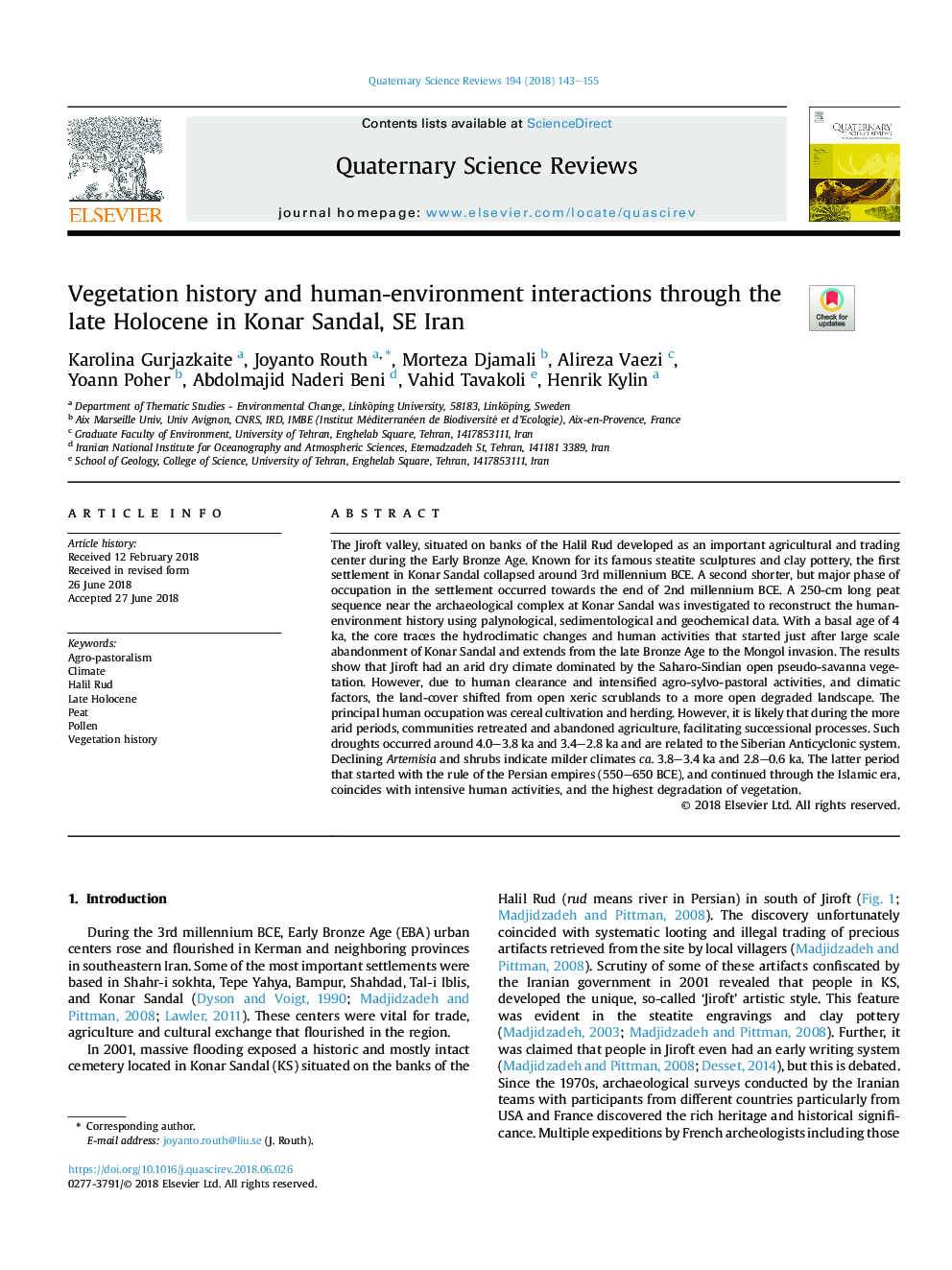| کد مقاله | کد نشریه | سال انتشار | مقاله انگلیسی | نسخه تمام متن |
|---|---|---|---|---|
| 8914666 | 1640741 | 2018 | 13 صفحه PDF | دانلود رایگان |
عنوان انگلیسی مقاله ISI
Vegetation history and human-environment interactions through the late Holocene in Konar Sandal, SE Iran
ترجمه فارسی عنوان
تاریخچه گیاهخواری و تعاملات انسانی و محیطی از طریق اواخر هولوسن در کنار سانتال، جنوب شرقی ایران
دانلود مقاله + سفارش ترجمه
دانلود مقاله ISI انگلیسی
رایگان برای ایرانیان
کلمات کلیدی
کشتارگاه کشاورزی، آب و هوا، هالیل رود، هالوتن بعدا، ذغال سنگ نارس، گرده، تاریخ گیاه شناسی،
موضوعات مرتبط
مهندسی و علوم پایه
علوم زمین و سیارات
زمین شناسی
چکیده انگلیسی
The Jiroft valley, situated on banks of the Halil Rud developed as an important agricultural and trading center during the Early Bronze Age. Known for its famous steatite sculptures and clay pottery, the first settlement in Konar Sandal collapsed around 3rd millennium BCE. A second shorter, but major phase of occupation in the settlement occurred towards the end of 2nd millennium BCE. A 250-cm long peat sequence near the archaeological complex at Konar Sandal was investigated to reconstruct the human-environment history using palynological, sedimentological and geochemical data. With a basal age of 4 ka, the core traces the hydroclimatic changes and human activities that started just after large scale abandonment of Konar Sandal and extends from the late Bronze Age to the Mongol invasion. The results show that Jiroft had an arid dry climate dominated by the Saharo-Sindian open pseudo-savanna vegetation. However, due to human clearance and intensified agro-sylvo-pastoral activities, and climatic factors, the land-cover shifted from open xeric scrublands to a more open degraded landscape. The principal human occupation was cereal cultivation and herding. However, it is likely that during the more arid periods, communities retreated and abandoned agriculture, facilitating successional processes. Such droughts occurred around 4.0-3.8 ka and 3.4-2.8 ka and are related to the Siberian Anticyclonic system. Declining Artemisia and shrubs indicate milder climates ca. 3.8-3.4 ka and 2.8-0.6 ka. The latter period that started with the rule of the Persian empires (550-650 BCE), and continued through the Islamic era, coincides with intensive human activities, and the highest degradation of vegetation.
ناشر
Database: Elsevier - ScienceDirect (ساینس دایرکت)
Journal: Quaternary Science Reviews - Volume 194, 15 August 2018, Pages 143-155
Journal: Quaternary Science Reviews - Volume 194, 15 August 2018, Pages 143-155
نویسندگان
Karolina Gurjazkaite, Joyanto Routh, Morteza Djamali, Alireza Vaezi, Yoann Poher, Abdolmajid Naderi Beni, Vahid Tavakoli, Henrik Kylin,
